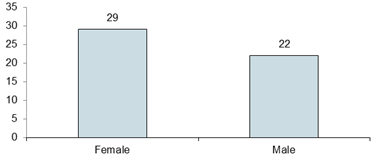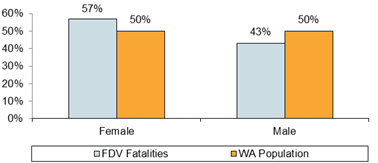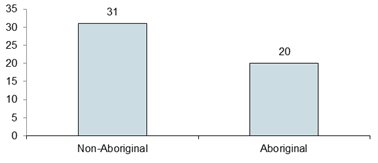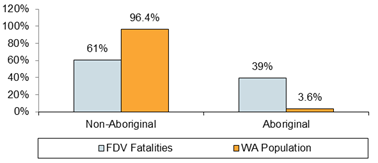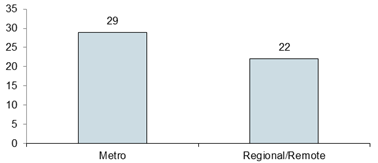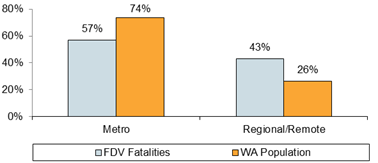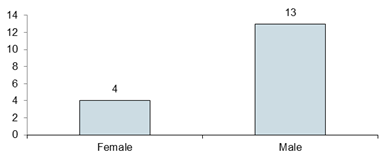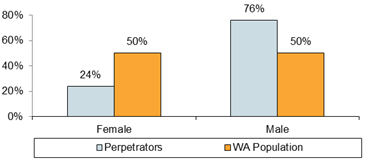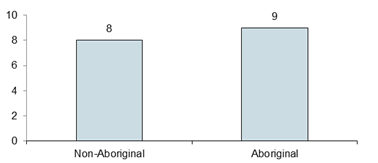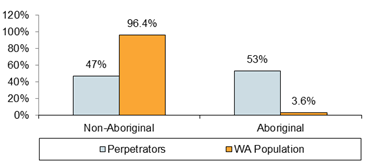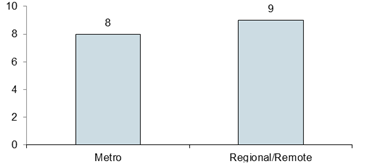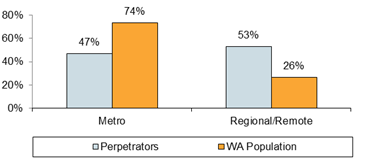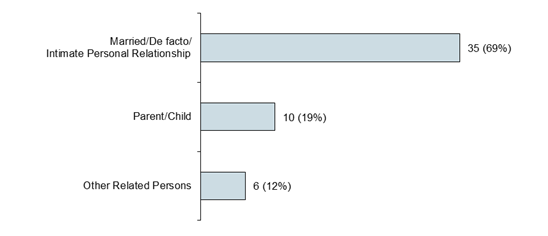Family and Domestic Violence Fatality Review
On 1 July 2012, the Office commenced an important new function to review family and domestic violence fatalities.
This section sets out the work of the Office in relation to this function. Information on the work has been divided as follows:
- Background;
- The role of the Ombudsman in relation to family and domestic violence fatalities;
- Patterns and trends identified from family and domestic violence fatality reviews;
- Issues identified in family and domestic violence fatalities;
- Improvements to public administration to address issues;
- Emerging themes from family and domestic violence fatality reviews; and
- Stakeholder liaison.
Background
The National Plan to Reduce Violence against Women and their Children 2010-2022 (the National Plan)identifies six key national outcomes:
- Communities are safe and free from violence;
- Relationships are respectful;
- Indigenous communities are strengthened;
- Services meet the needs of women and their children experiencing violence;
- Justice responses are effective; and
- Perpetrators stop their violence and are held to account.
The National Plan is endorsed by the Council of Australian Governments and supported by the First Action Plan: Building a Strong Foundation 2010-2013 (available at https://www.dss.gov.au/), which established the ‘groundwork for the National Plan’, and the Second Action Plan: Moving Ahead 2013-2016 (available at https://www.dss.gov.au/), which builds upon this work.
The WA Strategic Plan for Family and Domestic Violence 2009-13 and Western Australia’s Family and Domestic Violence Prevention Strategy to 2022: Creating safer communities include the following principles:
1. Family and domestic violence and abuse is a fundamental violation of human rights and will not be tolerated in any community or culture.
2. Preventing family and domestic violence and abuse is the responsibility of the whole community and requires a shared understanding that it must not be tolerated under any circumstance.
3. The safety and wellbeing of those affected by family and domestic violence and abuse will be the first priority of any response.
4. Children have unique vulnerabilities in family and domestic violence situations, and all efforts must be made to protect them from short and long term harm.
5. Perpetrators of family and domestic violence and abuse will be held accountable for their behaviour and acts that constitute a criminal offence will be dealt with accordingly.
6. Responses to family and domestic violence and abuse can be improved through the development of an all-inclusive approach in which responses are integrated and specifically designed to address safety and accountability.
7. An effective system will acknowledge that to achieve substantive equality, partnerships must be developed in consultation with specific communities of interest including people with a disability, people from diverse sexualities and/or gender, people from Aboriginal and Torres Strait Islander communities and people from culturally and linguistically diverse backgrounds.
8. Victims of family and domestic violence and abuse will not be held responsible for the perpetrator’s behaviour.
The associated Annual Action Plan 2009-10 identified a range of strategies including a ‘capacity to systematically review family and domestic violence deaths and improve the response system as a result’. The Annual Action Plan 2009-10 sets out 10 key actions to progress the development and implementation of the integrated response in 2009-10, including the need to ‘research models of operation for family and domestic violence fatality review committees to determine an appropriate model for Western Australia’.
Following a Government working group process examining models for a family and domestic violence fatality review process, the Government requested that the Ombudsman undertake responsibility for the establishment of a family and domestic violence fatality review function.
On 1 July 2012, the Office commenced its family and domestic violence fatality review function.
It was essential to the success of the establishment of the family and domestic violence fatality review role that the Office identified and engaged with a range of key stakeholders in the implementation and ongoing operation of the role. It was important that stakeholders understood the role of the Ombudsman, and the Office was able to understand the critical work of all key stakeholders.
Working arrangements were established to support implementation of the role with Western Australia Police (WAPOL) and the Department for Child Protection and Family Support (DCPFS) and with other agencies, such as the Department of Corrective Services (DCS) and the Department of the Attorney General (DOTAG), and relevant courts.
The Ombudsman’s Child Death Review Advisory Panel was expanded to include the new family and domestic violence fatality review role. Through the Ombudsman’s Advisory Panel (the Panel), and regular liaison with key stakeholders, the Office gains valuable information to ensure its review processes are timely, effective and efficient.
The Office has also accepted invitations to speak at relevant seminars and events to explain its role in regard to family and domestic violence fatality reviews, engaged with other family and domestic violence fatality review bodies in Australia and New Zealand and, since 1 July 2012, has met regularly via teleconference with the Australian Domestic and Family Violence Death Review Network.
Information regarding reportingThe annual reporting of the work of the Office on its family and domestic violence fatality review responsibility will be developed over future annual reports, in accordance with information identified from undertaking reviews over multiple years. This will include case studies and further information and analysis on underlying patterns and trends over time arising from family and domestic violence fatality reviews. There will also be reporting to Parliament of major own motion investigations, the first of which is examining issues associated with Violence Restraining Orders and their relationship with family and domestic violence fatalities. The report of the investigation will be tabled in Parliament in 2015 and publically available immediately upon tabling. Additionally, the report of the investigation will be reported upon comprehensively in the Ombudsman Western Australia Annual Report 2015-16. |
The Role of the Ombudsman in Relation to Family and Domestic Violence Fatalities
Information regarding the use of terms Information in relation to those fatalities that are suspected by WAPOL to have occurred in circumstances of family and domestic violence are described in this report as family and domestic violence fatalities. For the purposes of this report the person who has died due to suspected family and domestic violence will be referred to as ‘the person who died’ and the person whose actions are suspected of causing the death will be referred to as the ‘suspected perpetrator’ or, if the person has been convicted of causing the death, ‘the perpetrator’. Additionally, following Coronial and criminal proceedings, it may be necessary to adjust relevant previously reported information if the outcome of such proceedings is that the death did not occur in the context of a family and domestic relationship. |
WAPOL informs the Office of all family and domestic violence fatalities and provides information about the circumstances of the death together with any relevant information of prior WAPOL contact with the person who died and the suspected perpetrator. A family and domestic violence fatality involves persons apparently in a ‘family and domestic relationship’ as defined by section 4 of the Restraining Orders Act 1997.
More specifically, the relationship between the person who died and the suspected perpetrator is a relationship between two people:
(a) Who are, or were, married to each other; or
(b) Who are, or were, in a de facto relationship with each other; or
(c) Who are, or were, related to each other; or
(d) One of whom is a child who —
(i) Ordinarily resides, or resided, with the other person; or
(ii) Regularly resides or stays, or resided or stayed, with the other person;
or
(e) One of whom is, or was, a child of whom the other person is a guardian; or
(f) Who have, or had, an intimate personal relationship, or other personal relationship, with each other.
‘Other personal relationship’ means a personal relationship of a domestic nature in which the lives of the persons are, or were, interrelated and the actions of one person affects, or affected the other person.
‘Related’, in relation to a person, means a person who —
(a) Is related to that person taking into consideration the cultural, social or religious backgrounds of the two people; or
(b) Is related to the person’s —
(i) Spouse or former spouse; or
(ii) De facto partner or former de facto partner.
If the relationship meets these criteria, a review is undertaken.
The extent of a review depends on a number of factors, including the circumstances surrounding the death and the level of involvement of relevant public authorities in the life of the person who died or other relevant people in a family and domestic relationship with the person who died, including the suspected perpetrator. Confidentiality of all parties involved with the case is strictly observed.
The family and domestic violence fatality review process is intended to identify key learnings that will positively contribute to ways to prevent or reduce family and domestic violence fatalities. The review does not set out to establish the cause of death of the person who died; this is properly the role of the Coroner. Nor does the review seek to determine whether a suspected perpetrator has committed a criminal offence; this is only a role for a relevant court.
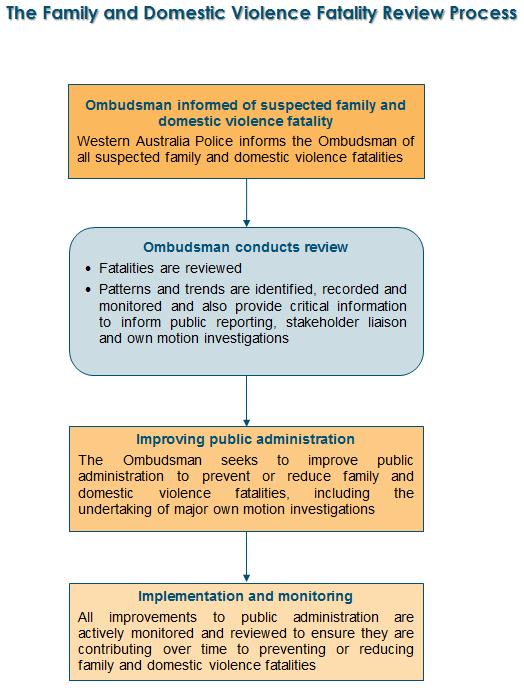
Number of family and domestic violence fatality reviews
In 2014-15, the number of reviewable family and domestic violence fatalities received was 16, compared to 15 in 2013-14 and 20 in 2012-13.
Patterns and Trends Identified from Family and Domestic Violence Fatality Reviews
Information on interpretation of dataInformation in this section is derived from the 51 reviewable family and domestic violence fatalities received from 2012-13 to 2014-15. As the information in the following charts is based on three years of data only, very significant care should be undertaken in interpreting the data. In subsequent reporting years, information will be presented across multiple years and include analysis of underlying patterns and trends. |
By examining family and domestic violence fatalities, the Ombudsman is able to capture data relating to demographics, risk factors and social and environmental characteristics and identify patterns and trends in relation to these deaths. When family and domestic violence fatality reviews are finalised, all relevant issues are identified and recorded and, over time, these issues indicate relevant patterns and trends in relation to family and domestic violence fatalities. These patterns and trends are identified, recorded, monitored, reported and analysed. They also inform the Ombudsman’s own motion investigations relating to family and domestic violence fatalities.
Characteristics of the persons who died
Information is obtained on a range of characteristics of the person who died, including gender, age group, Aboriginal status, and location of the incident in the metropolitan or regional areas.
The following charts show characteristics of the persons who died for the 51 family and domestic violence fatalities received by the Office from 1 July 2012 to
30 June 2015. The numbers may vary from numbers previously reported as, during the course of the period, further information may become available.
| Number of Persons who Died by Gender |
|
|
| Gender of Persons who Died Compared to WA Population |
|
Compared to the Western Australian population, females who died in the three years from 1 July 2012 to 30 June 2015, were over-represented, with 57% of persons who died being female compared to 50% in the population.
In relation to all 29 females who died, the suspected perpetrator is a male. Of the 22 men who died, four were apparent suicides, 11 involved a female suspected perpetrator, and seven involved a male suspected perpetrator.
| Number of Persons who Died by Age |
|
|
| Age of Persons who Died Compared to WA Population |
|
| Number of Persons who Died by Aboriginal Status |
|
|
| Aboriginal Status of Persons who Died Compared to WA Population |
|
Compared to the Western Australian population, Aboriginal people who died were over-represented, with 39% of people who died in the three years from 1 July 2012 to 30 June 2015 being Aboriginal compared to 3.6% in the population. Of the 20 Aboriginal people who died, 11 were female and 9 were male.
| Number of Persons who Died by Location of Fatal Incident |
|
|
| Location of Fatal Incident Compared to WA Population |
|
Compared to the Western Australian population, incidents in regional or remote locations were over-represented, with 43% of fatal incidents in the three years from
1 July 2012 to 30 June 2015 occurring in regional or remote locations, compared to 26% of the population living in those locations.
The WA Strategic Plan for Family and Domestic Violence 2009-13 notes that:
While there has been debate about the reliability of research that quantifies the incidence of family and domestic violence, there is general agreement that …
- An overwhelming majority of people who experience family and domestic violence are women, and
- Aboriginal women are more likely than non-Aboriginal women to be victims of family violence.
More specifically, with respect to the impact on Aboriginal women in Western Australia, the WA Strategic Plan notes that:
Family and domestic violence is particularly acute in Aboriginal communities. In Western Australia, it is estimated that Aboriginal women are 45 times more likely to be the victim of family violence than non-Aboriginal women, accounting for almost 50 per cent of all victims.
In its work, the Office is placing a focus on ways that public authorities can prevent or reduce family and domestic violence fatalities for women, including Aboriginal women. In undertaking this work, specific consideration is being given to issues relevant to regional and remote Western Australia.
Characteristics of the perpetrators
Information in this section relates only to family and domestic violence fatalities reviewed from 1 July 2012 to 30 June 2015 where coronial and criminal proceedings (including the appellate process, if any) were finalised by 30 June 2015. |
Of the 51 family and domestic violence fatalities received by the Ombudsman from 1 July 2012 to 30 June 2015, coronial and criminal proceedings were finalised in 17 cases.
Information is obtained on a range of characteristics of the perpetrator including gender, age group and Aboriginal status. The following charts show characteristics for the 17 perpetrators where both the criminal proceedings and the coronial process have been finalised.
| Perpetrator by Gender |
|
|
| Gender of Perpetrators Compared to WA Population |
|
Compared to the Western Australian population, male perpetrators of fatalities in the years from 1 July 2012 to 30 June 2015 were over-represented, with 76% of perpetrators being male compared to 50% in the population.
Six males were convicted of manslaughter and seven males were convicted of murder. Three females were convicted of manslaughter and one female was convicted of murder.
| Perpetrator by Age |
|
|
| Age of Perpetrators Compared to WA Adult Population |
|
Compared to the Western Australian adult population, perpetrators of fatalities in the three years from 1 July 2012 to 30 June 2015 in the age groups 30-39 and 40-49 were over-represented, with 29% of perpetrators being in the 30-39 age group compared to 18% in the population, and 35% of perpetrators being in the 40-49 age group compared to 19% in the population.
| Perpetrator by Aboriginal Status |
|
|
| Aboriginal Status of Perpetrators Compared to WA Population |
|
Compared to the Western Australian population, Aboriginal perpetrators of fatalities in the three years from 1 July 2012 to 30 June 2015 were over-represented with 53% of perpetrators being Aboriginal compared to 3.6% in the population.
In eight of the nine cases where the perpetrator was Aboriginal, the person who died was also Aboriginal.
| Perpetrator by Location of Fatal Incident |
|
|
| Perpetrators by Location of Fatal Incident Compared to WA Population |
|
The majority of fatal incidents occured in regional or remote areas.
Compared to the Western Australian population, perpetrators of fatalities that occurred in regional or remote locations in the three years from 1 July 2012 to 30 June 2015 were over-represented, with 53% of perpetrators in regional or remote locations compared to 26% of the population living in those locations.
Circumstances of family and domestic violence fatalities
Information provided to the Office by WAPOL about family and domestic violence fatalities includes general information on the circumstances of death. This is an initial indication of how the death may have occurred but is not the cause of death, which can only be determined by the Coroner.
Family and domestic violence fatalities may occur through alleged homicide or apparent suicide and the circumstances of death are categorised by the Ombudsman as:
- Alleged homicide, including:
- Stabbing;
- Physical assault;
- Gunshot wound;
- Asphyxiation/suffocation;
- Drowning; and
- Other.
- Apparent suicide, including:
- Gunshot wound;
- Overdose of prescription or other drugs;
- Stabbing;
- Motor vehicle accident;
- Hanging;
- Drowning; and
- Other.
- Other, including fatalities where it is not clear whether the circumstances of death are alleged homicide or apparent suicide.
The principal circumstances of death in 2014-15 were alleged homicide by stabbing and physical assault.
Family and domestic relationships
As shown in the following chart, married, de facto, or intimate personal relationship are the most common relationships involved in family and domestic violence fatalities.
| Family and Domestic Relationships |
|
Of the 51 family and domestic violence fatalities received by the Office from
1 July 2012 to 30 June 2015:
35 fatalities (69%) involved a married, de facto or intimate personal relationship, of which there were 31 alleged homicides and 4 apparent suicides. The 35 fatalities included 8 deaths that occurred in 4 cases of alleged homicide/suicide and, in all 4 cases, a female was allegedly killed by a male, who subsequently died in circumstances of apparent suicide. Of the remaining 27 alleged homicides, 19 (70%) of the people who died were female and 8 (30%) were male;
There were 10 people who died (19%) who were either the parent or adult child of the suspected perpetrator. Of these, 4 (40%) were female and 6 (60%) were male. In 6 cases (60%) the person who died was the parent or step-parent and in 4 cases (40%) the person who died was the adult child or step-child; and
There were 6 people who died (12%) who were otherwise related to the suspected perpetrator (including siblings and extended family relationships). Of these, 2 (33%) were female and 4 (67%) were male.
Issues identified in Family and Domestic Violence Fatalities
The following are the types of issues identified when undertaking family and domestic violence fatality reviews.
It is important to note that:
|
|
Improvements to Public Administration to Address Issues
To address the types of issues identified during the Ombudsman’s reviews, the public authorities involved agreed to carry out a range of actions. The following are the types of improvements arising from family and domestic violence fatality reviews.
|
In addition to improvements arising from the review of family and domestic violence fatalities, the Office undertakes major own motion investigations from identified patterns and trends arising from the undertaking of reviews. These major own motion investigations also lead to improvements to public administration to address the issues identified in these major own motion investigations (principally through the making of recommendations to public authorities about ways to prevent or reduce family and domestic violence fatalities).
Own Motion Investigation into Family and Domestic Violence FatalitiesThrough the review of family and domestic violence fatalities, the Ombudsman identified a pattern of cases in which Violence Restraining Orders (VROs) were in place. For this reason, the Ombudsman has undertaken significant work on a major own motion investigation into issues associated with VROs and their relationship with family and domestic violence fatalities, with a view to determining whether it may be appropriate to make recommendations to any public authority about ways to prevent or reduce family and domestic violence fatalities. The report of this major own motion investigation will be tabled in Parliament in 2015. |
Emerging Themes from Family and Domestic Violence Fatality Reviews
Information on interpretation of emerging themesInformation in this section is derived from the 43 reviewable family and domestic violence fatalities finalised from 2012-13 to 2014-15. As the information in the following section is based on three years of data, care should be undertaken in interpreting the emerging themes. |
Type of relationships
The Ombudsman finalised 43 family and domestic violence fatality reviews from
1 July 2012 to 30 June 2015.
For 30 (70%) of the finalised reviews of family and domestic violence fatalities, the fatality occurred between persons who, either at the time of death or at some earlier time, had been involved in a married, de facto or intimate personal relationship. For the remaining 13 (30%) of the finalised family and domestic violence fatality reviews, the fatality occurred between persons where the relationship was between a parent and their adult child or persons otherwise related (such as siblings and extended family relationships).
These two groups will be referred to as ‘intimate partner fatalities’ and ‘non‑intimate partner fatalities’.
For the 43 finalised reviews, the circumstances of the fatality were as follows:
- For the 30 intimate partner fatalities, 27 were alleged homicide and 3 were apparent suicide; and
- For the 13 non-intimate partner fatalities, all were alleged homicide.
Intimate partner relationships
Of the 27 intimate partner relationship fatalities involving alleged homicide:
- There were 20 fatalities where the person who died was female and the suspected perpetrator was male, and 7 where the person who died was male and the suspected perpetrator was female;
- There were 12 intimate partner fatalities that involved Aboriginal people as both the person who died and the suspected perpetrator. In 7 of these fatalities the person who died was female and in 5 the person who died was male;
- There were 15 fatalities that occurred at the joint residence of the person who died and the suspected perpetrator, 4 at the residence of the person who died or the residence of the suspected perpetrator, 4 at the residence of a family or friends, and 4 at the workplace of the person who died or the suspected perpetrator or in a public place; and
- There were 14 fatalities that occurred in regional and remote areas, and in 11 of these the person who died was Aboriginal.
Non-intimate partner relationships
Of the 13 non-intimate partner fatalities, there were eight fatalities involving a parent and adult child and five fatalities where the parties were otherwise related.
Of the 13 non-intimate partner fatalities, all of which involved alleged homicide:
- In the 4 fatalities where the person who died was female, the suspected perpetrator was a male. In the 9 fatalities where the person who died was male, 6 of the suspected perpetrators were male and 3 were female;
- There were 5 non-intimate partner fatalities that involved Aboriginal people as both the person who died and the suspected perpetrator;
- There were 4 fatalities that occurred at the joint residence of the person who died and the suspected perpetrator, 6 at the residence of the person who died or the residence of the suspected perpetrator, and 3 at the residence of family or friends or in a public place; and
- There were 4 fatalities that occurred in regional and remote areas.
Prior reports of family and domestic violence
Intimate partner fatalities were more likely than non-intimate partner fatalities to have involved previous reports of alleged family and domestic violence between the parties. In 18 (67%) of the 27 intimate partner fatalities involving alleged homicide, alleged family and domestic violence between the parties had been reported to WAPOL and, in some instances, to other public authorities, such as the Department of Health (DOH) and DCPFS. In three (23%) of the 13 non-intimate partner fatalities, alleged family and domestic violence between the parties had been reported to WAPOL or other public authorities.
Cases with no previous reports of family and domestic violence
In nine (33%) of the 27 intimate partner fatalities involving alleged homicide, the fatal incident was the only family and domestic violence between the parties that had been reported to WAPOL. It is important to note, however, research indicating under-reporting of family and domestic violence. The Australian Bureau of Statistics’ Personal Safety Survey 2012 ‘collected information about a person's help seeking behaviours in relation to their experience of partner violence’. For example, this research found that (emphasis in original text):
An estimated 190,100 women (80% of the 237,100 women who had experienced current partner violence) had never contacted the police about the violence by their current partner.
Family and domestic violence involving Aboriginal people
Family and domestic violence involving Aboriginal people in regional and remote communities Of the 43 family and domestic violence fatality reviews finalised from 1 July 2012 to 30 June 2015, Aboriginal Western Australians were over-represented, with 17 persons who died being Aboriginal. In each case, the suspected perpetrator was also Aboriginal. There were 14 of these fatalities that occurred in a regional or remote area of Western Australia, of which 11 were intimate partner fatalities. Of the 43 family and domestic violence fatality reviews finalised from 1 July 2012 to 30 June 2015, eight (19%) occurred in the Kimberley region compared to 1.6% of people in the Western Australian population living in the region. All of these fatalities involved Aboriginal people as both the person who died and the suspected perpetrator. The over-representation of family and domestic violence fatalities involving Aboriginal people in the Kimberley region, is consistent with the over-representation of family and domestic violence in the Kimberley region reported in the Second Action Plan: Moving Ahead 2013-2016 (available at https://www.dss.gov.au/). This plan indicates (at page 24) that in regional areas of Western Australia, ‘particularly the Kimberley, the rate of reported family and domestic violence per head of population is significantly higher than the metropolitan area’. The Ombudsman’s review of family and domestic violence fatalities will continue to focus particular attention on the effectiveness of the administration of the responsibilities of public authorities in relation to reducing and preventing family and domestic violence involving Aboriginal people in regional communities. |
Factors co-occurring with family and domestic violence
On the information available, relating to the 40 family and domestic violence fatalities involving alleged homicide that were finalised from 1 July 2012 to 30 June 2015, the Ombudsman’s reviews identify where alcohol use and/or drug use are factors associated with the fatality, and where there may be a history of alcohol use and/or drug use.
|
ALCOHOL USE |
DRUG USE |
||
Associated with fatal event |
Prior history |
Associated with fatal event |
Prior history |
|
Person who died only |
1 |
0 |
1 |
4 |
Suspected perpetrator only |
2 |
8 |
4 |
6 |
Both person who died and suspected perpetrator |
14 |
15 |
3 |
5 |
Total |
17 |
23 |
8 |
15 |
The Ombudsman’s reviews will continue to identify patterns and trends and consider improvements associated with co-occurring factors in relation to family and domestic violence.
Major own motion investigations
In addition to investigations of individual family and domestic violence fatalities, the Office identifies patterns and trends arising out of reviews to inform major own motion investigations that examine the practice of public authorities that provide services to children, their families and their communities. In 2014-15, the Office undertook significant work on a major own motion investigation into issues associated with Violence Restraining Orders and their relationship with family and domestic violence fatalities.
Other mechanisms to prevent or reduce family and domestic violence fatalities
In addition to reviews of individual family and domestic violence fatalities and major own motion investigations, the Office uses a range of other mechanisms to improve public administration with a view to preventing or reducing family and domestic violence fatalities. These include:
- Assisting public authorities by providing information about issues that have arisen from family and domestic violence fatality reviews, and enquiries and complaints received, that may need their immediate attention, including issues relating to the safety of other parties;
- Through the Panel, and other mechanisms, working with public authorities and communities where individuals may be at risk of family and domestic violence to consider safety issues and potential areas for improvement, and to highlight the critical importance of effective liaison and communication between and within public authorities and communities;
- Exchanging information, where appropriate, with other accountability and oversight agencies including Ombudsmen and family and domestic violence fatality review bodies in other States to facilitate consistent approaches and shared learning;
- Undertaking or supporting research that may provide an opportunity to identify good practices that may assist in the prevention or reduction of family and domestic violence fatalities; and
- Taking up opportunities to inform service providers, other professionals and the community through presentations.
Stakeholder Liaison
Efficient and effective liaison has been established with WAPOL to develop and support the implementation of the process to inform the Ombudsman of family and domestic violence fatalities. Regular liaison occurs at senior officer level between the Office and WAPOL.
The Ombudsman’s Advisory Panel
The Panel is an advisory body established to provide independent advice to the Ombudsman on:
- Issues and trends that fall within the scope of the family and domestic violence fatality review function;
- Contemporary professional practice relating to the safety and wellbeing of people impacted by family and domestic violence; and
- Issues that impact on the capacity of public authorities to ensure the safety and wellbeing of individuals and families.
The Panel met four times in 2014-15 and during the year the following members provided a range of expertise:
- Professor Steve Allsop (Director, National Drug Research Institute, Curtin University);
- Ms Jocelyn Jones (Health Sciences, Curtin University);
- Professor Donna Chung (Head of the Department of Social Work, Curtin University);
- Ms Dorinda Cox (Consultant);
- Ms Angela Hartwig (Women’s Council for Domestic and Family Violence Services WA);
- Ms Victoria Hovane (Consultant); and
- Associate Professor Carolyn Johnson (School of Population Health, University of Western Australia).
Observers from WAPOL, DCPFS, DOH, Department of Education, DCS, DOTAG and the Department of Aboriginal Affairs also attended the meetings.
In 2014-15, among other things, the Panel provided advice to the Ombudsman regarding the first major own motion investigation in relation to family and domestic violence fatalities.
4th Australasian Conference on Child Death Inquiries and Reviews
The Office, together with DCPFS, hosted the 4th Australasian Conference on Child Death Inquiries and Reviews on 6 and 7 November 2014. This year the conference also considered inquiries and reviews of family and domestic violence fatalities.
The conference was officially opened by the Honourable Helen Morton MLC, Minister for Child Protection, and featured opening and closing addresses from the Ombudsman and Emma White, Director General of DCPFS.
This important biennial conference, hosted for the first time in Western Australia, provided a program of national and international leaders in reviews of child deaths, serious injuries to children, and family and domestic violence fatalities.
The conference’s theme, ‘Achieving Outcomes that Make a Difference’, provided delegates with the opportunity to consider a range of topics critical to the success of child death and family and domestic violence fatality reviews. These topics included:
- Challenges and opportunities for enhancing child death review functions;
- Child death review: achieving outcomes that make a difference;
- Leading for learning following a child fatality;
- Creating a culture of learning in safeguarding following a crisis;
- Prevention of youth suicide;
- Child death: the impact of family and domestic violence on Aboriginal women, children and families; and
- Issues and challenges for family and domestic violence fatality review jurisdictions and child protection agencies.
Attendees had the opportunity to participate in discussions about innovations, challenges and future opportunities to strengthen child protection services and child death and family and domestic violence fatality review practices by achieving outcomes that make a difference.
During his opening address, the Ombudsman highlighted the importance of working collaboratively across professional and jurisdictional boundaries to develop expertise in conducting child death reviews and reviews of family and domestic violence fatalities in Australia and New Zealand.
The conference, which received very positive feedback, featured keynote addresses from Professor Donna Chung, Head of the Department of Social Work at Curtin University, and Victoria Hovane, Managing Director of Tjallara Consulting. Former Director General of DCPFS, Terry Murphy, and Jayne Forsdike, from Newcastle Children’s Social Care, also gave presentations to delegates. Copies of all presentation slides are available on the Ombudsman’s website.
Other key stakeholder relationships
There are a number of public authorities and other bodies that interact with or deliver services to those who are at risk of family and domestic violence or who have experienced family and domestic violence. Important stakeholders, with which the Office liaises as part of the family and domestic violence fatality review function, include:
- The Coroner;
- Relevant public authorities including:
- Western Australia Police;
- The Department of Health;
- The Department of Education;
- The Department of Corrective Services;
- The Department for Child Protection and Family Support;
- The Department of Housing;
- The Department of the Attorney General;
- The Department of Aboriginal Affairs; and
- Other accountability and similar agencies including the Commissioner for Children and Young People;
- The Women’s Council for Domestic and Family Violence Services WA and relevant non-government organisations; and
- Research institutions including universities.
Aboriginal and regional communities
Through the Panel and outreach activities, work was undertaken through the year to build relationships relating to the family and domestic violence fatality review function with Aboriginal and regional communities, including by communicating with:
- Key public authorities that work in metropolitan and regional areas;
- Non-government organisations that provide key services such as health services to Aboriginal people; and
- Aboriginal community leaders to increase the awareness of the family and domestic violence fatality review function and its purpose.
Building on the work already undertaken by the Office, as part of its other functions, including its child death review function, networks and contacts have been established to support effective and efficient family and domestic violence fatality reviews.
Go to next section of the Annual Report 2014-15 >>
Go to next section of the Annual Report 2014-15 >>
Go to previous section of the Annual Report 2014-15>>
Go back to Annual Reports page >>
Download the Family and Domestic Violence Fatality Review section as a PDF
To read a pdf, you will need Adobe Acrobat Reader, which can be downloaded
for free from Adobe at http://www.adobe.com/products/
acrobat/readstep2.html.

